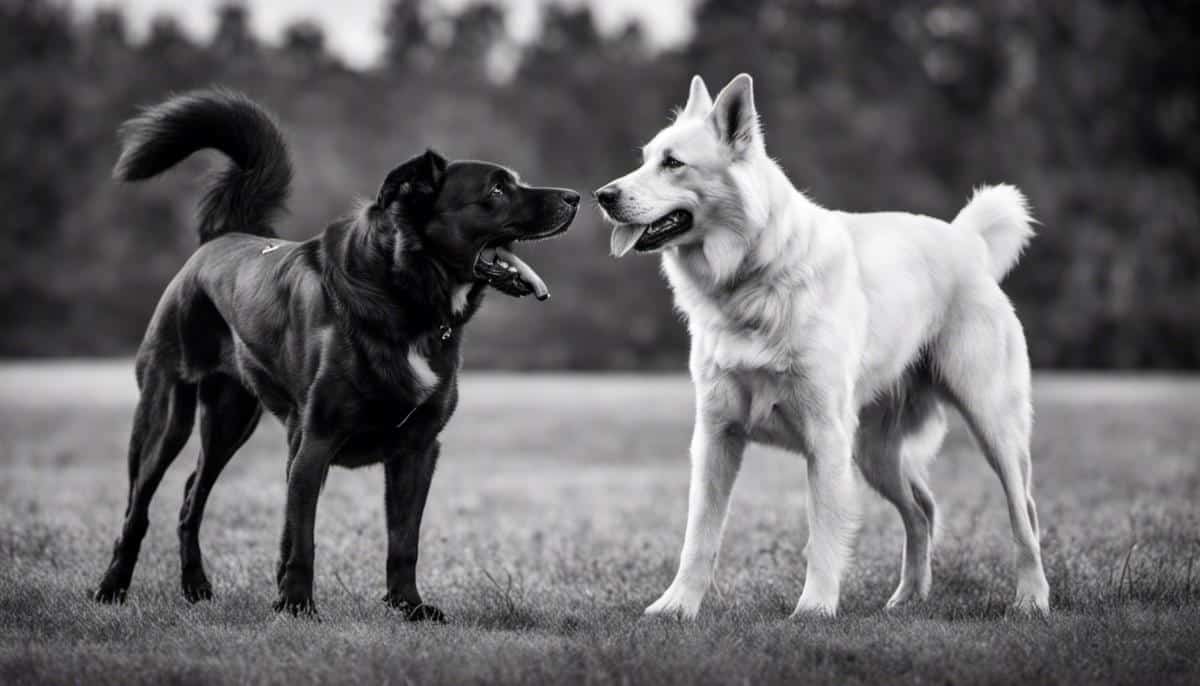
Understanding how dogs interact with each other extends beyond recognizing their playful tail wags and happy barks. It necessitates a deeper insight into their world, where certain behaviors may signal stress, fear, or aggression. As dog lovers, owners, or simply bystanders, it’s crucial to comprehend these messages our canine friends are trying to convey.
In this exploration, we delve into the triggers and signs of dog-on-dog aggression – an often misunderstood and mishandled behavior – focusing on limb bites in particular. From identifying the subtle signs of aggression in dogs to implementing strategies to effectively manage and prevent these behaviors, this discourse serves as a comprehensive guide to foster safer, healthier interactions between your furry friend and their canine counterparts.
Understanding Dog-on-Dog Aggression
A particularly puzzling question for most dog owners is understanding why their typically well-behaved furry friend suddenly showcases aggression towards other dogs. It’s an experience that can be both distressing and confusing. Today we’re exploring the roots of this behavior and highlighting five reasons that could explain why your pet might be acting out on their usually friendly nature.
- Fear and Anxiety
Just like humans, dogs express aggression when they feel threatened or nervous in certain situations. It’s kind of their way of saying, “I’m not comfortable with you being so close.” In situations where they feel scared or anxious, dogs may resort to aggression as a defense mechanism. Professional training can help in such cases, teaching your dog to react positively in unfamiliar situations.
- Dominance
Dogs are inherently social animals, and they understand the concept of hierarchy quite well. Aggressive behavior is sometimes a result of a dog trying to establish dominance over other dogs. It’s their unique way of saying, “Hey! This is my territory.” As a responsible pet owner, it’s pivotal to re-establish that you are the pack leader and discourage such behavior.
- Improper Socialization
Most of this behavior is rooted in inadequate socialization during puppyhood. Puppies need to interact with other puppies, people, and environments to learn the right behavior. If your dog hasn’t been properly socialized, they might feel nervous or scared around other dogs, leading to aggression.
- Medical Issues
Does your dog’s aggression seem unexplained? It may be worth taking a visit to the vet. Sometimes, underlying health issues cause mood swings and aggression in dogs. Problems such as thyroid dysfunction, neurological conditions, or physical pain could trigger hostility in otherwise happy-go-lucky pooches.
- Redirected Aggression
If your dog is already agitated and another dog comes into the picture, they might redirect their aggression towards the latter. This often happens when they can’t reach whatever is causing their frustration.
Spotting and understanding aggression in dogs is the first step to resolving it. However, completely stopping aggressive behavior, especially if it’s become a habit, often requires the help of a professional dog trainer or behaviorist. Remember, it’s all about creating a safe and stress-free environment for your dog and those around them. While aggression can be a scary and confusing thing to witness in our beloved pups, always keep in mind that it’s usually them trying to communicate their fears and anxieties. With patience, understanding, and the right help, we can guide our furry friends towards happier interactions.
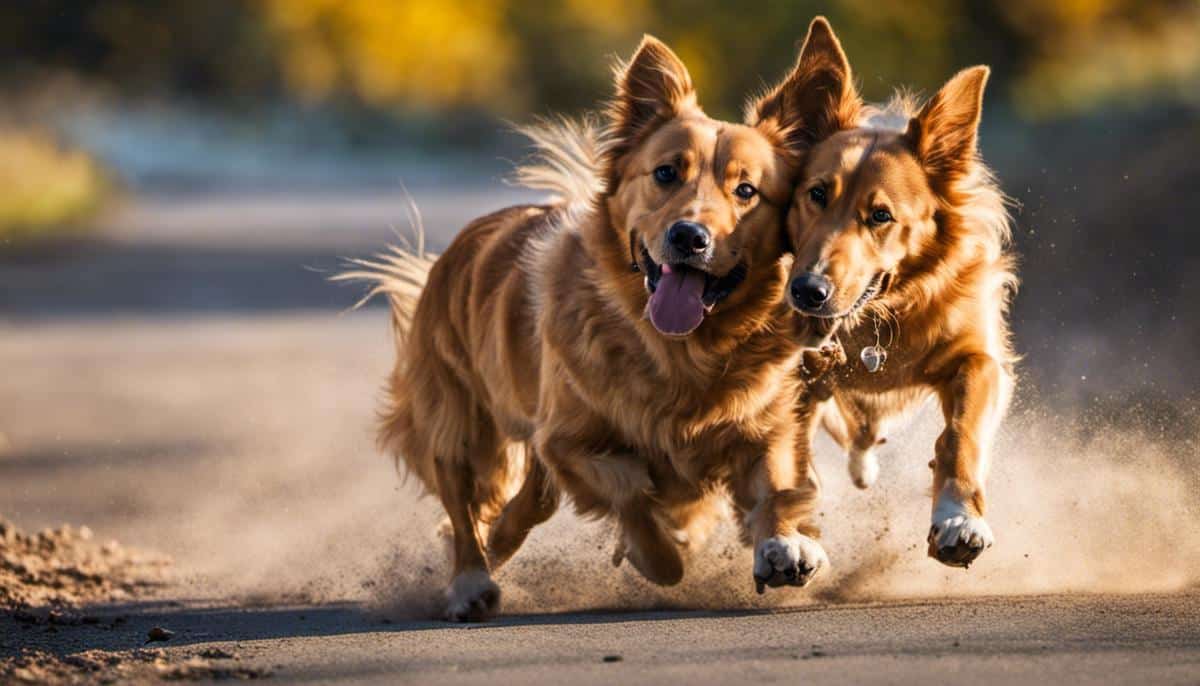
Dog Body Language and Signs
Recognizing Warning Signs in Aggressive Dogs: Guidance for Children
Every parent wants their child to grow up happy and safe, and a big part of that includes teaching them how to interact and behave around pets, and notably, dogs. Understanding a dog’s behavior can often feel like a challenge, especially for kids. Carrying on from what we’ve previously discussed – Fear and Anxiety, Dominance, Improper Socialization, Medical Issues, and Redirected Aggression – this article provides an additional set of signs that parents can teach children to spot in potentially aggressive dogs.
To start, let’s turn our attention toward a revealing sign – Protective Behavior. Dogs are often protective of their territory, food, toys, and their social group. Children should be advised to watch out for growling, snarly facial expressions, or lunging when these elements are present. Stressing the importance of not interfering with a dog when they’re enjoying their meal or playing with their toy will instill respect for animal space and boundaries.
Next up is Prolonged Staring. A dog locking eye contact for a prolonged period often signals a challenge or dominance. Encouraging children to avoid sustained eye contact with unfamiliar dogs will be a crucial step to prevent unintentional provocation.
Another warning sign is Tension in a dog’s Body Posture. An upset or aggravated dog often stiffens its body, curves its tail upwards, and pricks up its ears. Training children to observe these subtle shifts in a dog’s physical demeanor can go a long way in preventing possible aggressive encounters.
Additionally, bare teeth can signify aggressive intent in a dog. Dogs that are about to bite often show their teeth, so it’s crucial for children to associate a dog showing its teeth with potential danger, much like recognizing storm clouds as a sign of an impending rain shower.
Lastly, we can’t forget Barking and Growling. While dogs may bark or growl for many reasons, persistent and aggressive sounds are often signs of an inflamed mood. Instruct your child to step back and alert an adult if they encounter a dog exhibiting these behaviors.
With a little time and patience, children can learn these signs and become better equipped to interact safely and respectfully with dogs. It’s vitally important to consistently remind them that every dog is unique, and understanding their signals and respecting their space is a keystone in forming safe and positive relationships with these lovable companions. By empowering our young ones with this knowledge, not only do we mold them into responsible individuals, but we also–bit by bit, bark by bark–make our world a safer, brighter place. And isn’t that what parenting is all about?
Remember, it’s not about making your child fearful, but knowledgeable and respectful. After all, the dog isn’t just man’s best friend; it’s also a child’s first lesson in empathy, understanding, and friendship. Happy parenting (and petting)!
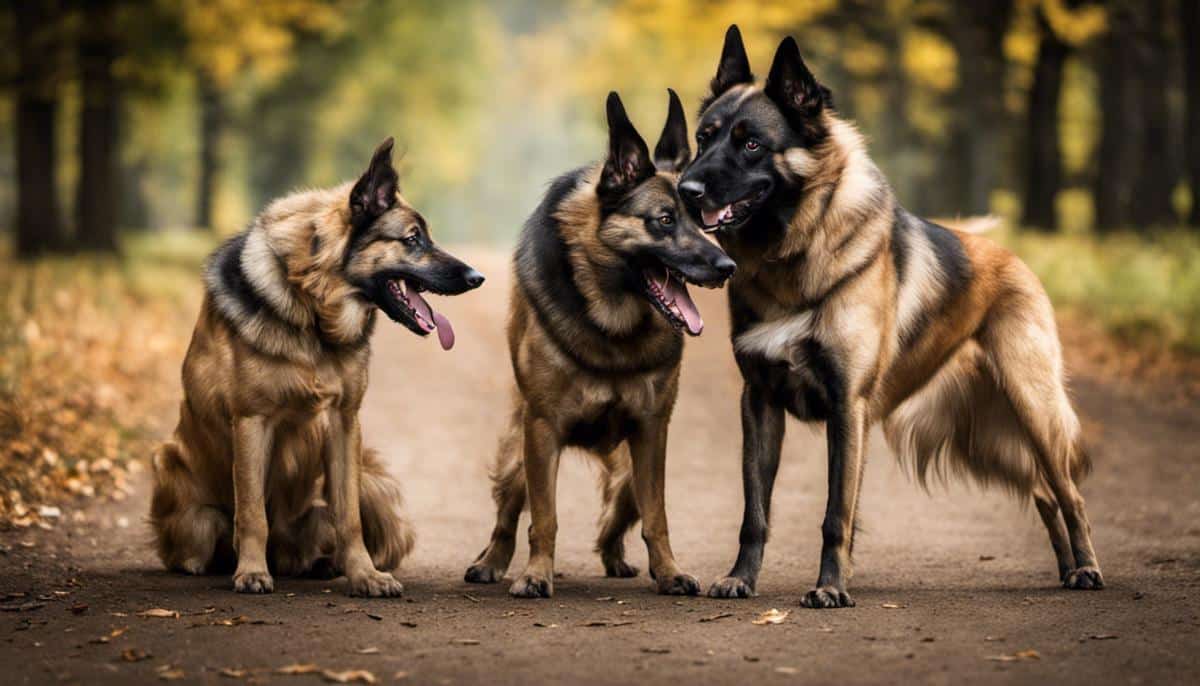
Preventing Aggression Towards Other Dogs
Cultivating a Harmonious Relationship Between Your Family Dog and Other Canines
When it comes down to it, harmonious living isn’t just pertinent to us as humans, it extends to our furry friends too. Dare to venture into the nuanced world of canine behavior and let’s discover ways to prevent our beloved family dog from showing aggression to other dogs. Whether at the dog park, walking around the neighborhood, or even in our backyard, we want to promote friendly interactions between our dogs and their fellow canines.
One proactive approach is ensuring that your dog is properly trained. Training isn’t just about mastering tricks, it’s about fostering discipline and mutual respect between you and your pooch. The goal is to make your dog understand that aggressive behavior is not tolerated, and they feel safe and secure in following your directions.
Harnessing the power of positive reinforcement can be incredibly influential. Rather than focusing on punishment, reward your dog’s good behavior. This could be in the form of a treat, extra playtime, or a hearty belly rub! When your dog displays good behavior around other dogs, they’ll associate the positive reinforcement with that behavior.
Another technique is introducing the concept of sharing toy time. Allowing your dog to share toys with other dogs can help them get used to accepting the presence of another canine. Start this practice with a familiar dog like a neighbor’s pet for that added comfort.
To mitigate any form of hostility, managing your dog’s exposure to other dogs plays a critical role. Gradual exposure to new dogs in controlled settings can prevent overwhelming your furry friend, reducing the potential for aggression. Keeping group sizes small and encounters short initially, then gradually increasing as your dog becomes more comfortable can create a sizeable shift in perspective.
Nutrition also plays an instrumental role in managing a dog’s aggression. Certain diets can affect canine behavior. High-quality, nutritionally balanced food can impact your dog’s mood and behavior. Consulting with a vet on the best diet for your pooch could be an avenue worth exploring.
Lastly, consider seeking professional help. Canine behaviorists or professional trainers have specialized knowledge of handling aggressive dogs. They may provide exceptional insights into your dog’s behavior and offer tailored solutions perfect for your pooch.
Remember, every dog is unique and what works for one might not work for another. It’s through patience, understanding, and trying different approaches that we might find the perfect balance for our furry friends. Let’s build a world where our beloved dogs can live in harmony with their fellow canines – because after all, they’re family too.
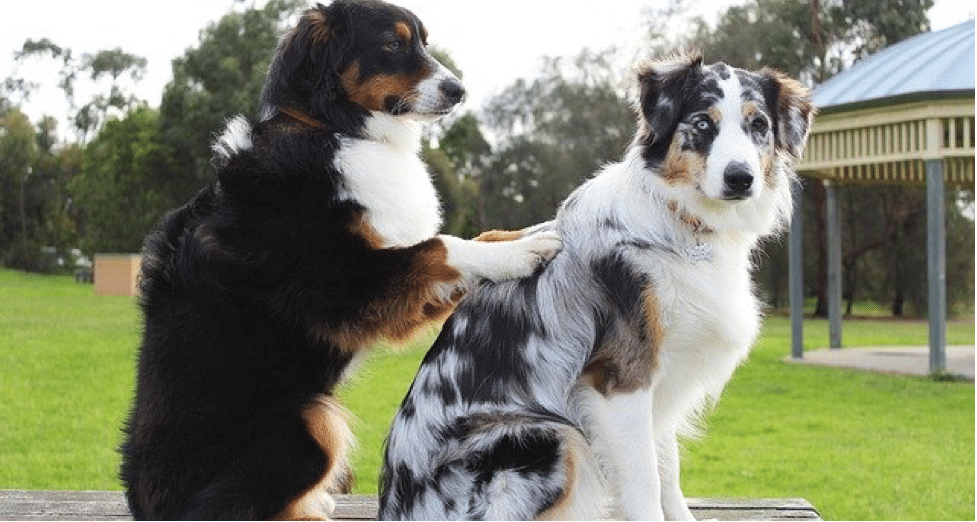
Managing Dog-on-Dog Aggression
Creating a Harmonious Household for Dogs
We all cherish a peaceful home that is filled with love and respect. This should extend to our four-legged companions too. It’s pivotal to establish a harmonious living environment for our dogs, where they feel safe and protected.
The Ideal Training for Aggressive Dogs
Training plays a significant role when we talk about preventing aggression in dogs. It’s never too early or too late for your dog to learn new, appropriate behaviors. Ingraining obedience and respect commands, like “sit”, “stay”, and “leave it”, as well as gradual exposure to other dogs in a controlled environment can effectively curtail aggressive tendencies.
Harness the Power of Positive Reinforcement
Positive reinforcement techniques act as an excellent tool for shaping a dog’s behavior. Rewarding single instances of friendly behavior towards other dogs can build a strong association between good behavior and rewards, thus encouraging our furry friends to remain calm and friendly.
Instilling the Concept of Toy-Sharing
Teaching our dogs to share toy time with another dog can help manage their aggressive tendencies to a large extent. It encourages them to adjust socially and gradually builds their tolerance.
Manage Your Dog’s Exposure to Other Dogs
All dogs may not react similarly in a pack. Some might enjoy the company, while others might feel intimidated. It’s crucial to manage our dog’s exposure to other dogs and ensure it’s a positive and constructive experience. Remember, this isn’t an overnight process; patience and perseverance are key here.
The Role of Proper Nutrition
Many times, we overlook the role good nutrition plays in managing a dog’s aggression. Inadequate or imbalanced nutrition might fuel hostility in dogs. Hence, it’s vital to provide a balanced diet that caters to all their nutritional needs.
When it’s Time to Seek Professional Help
Sometimes, despite giving our best, we might feel stuck due to the persistent aggressive behavior of our dog. When at-home adjustments don’t work, it’s advisable to reach out to a professional dog behaviorist. These experienced professionals can provide personalized guidance and help our canines adjust more healthily.
Every Dog is Unique
Remember, each dog has a unique personality. It’s essential to understand that one technique might work wonders for one dog and not another. Keep exploring different approaches until you find a suitable one that works best for your furry friend.
Remember, our goal is not to eradicate dog aggression but to manage it. Hence, focus on nurturing a loving bond with your dog, understanding their needs, and fulfilling them to ensure that they feel secure and valued.
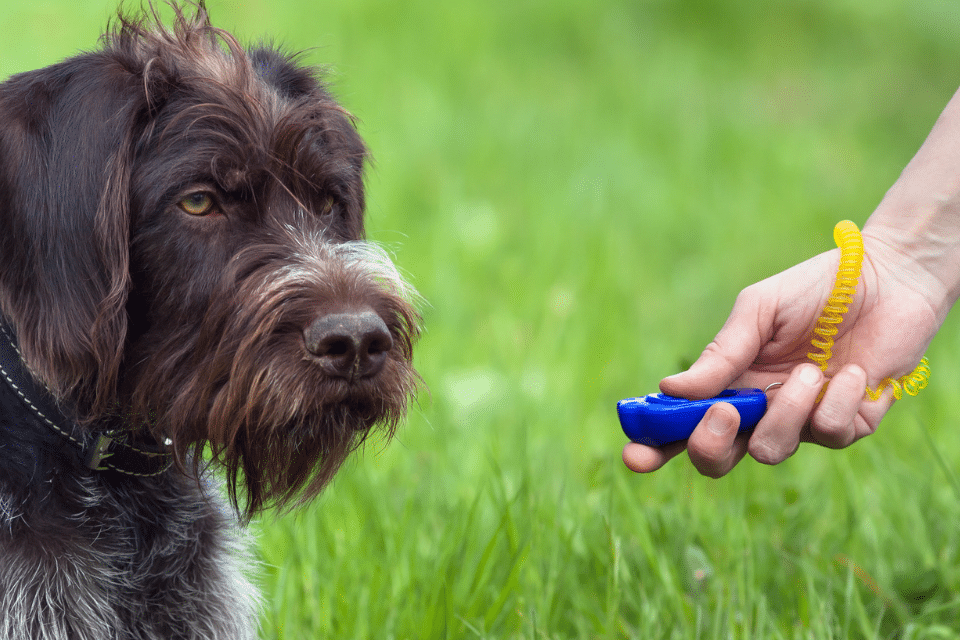
Proactive prevention, keen observation, and informed response are the stepping stones towards managing dog-on-dog aggression. Armed with an understanding of why dogs may resort to such behavior and what their body language signals, we can play a pivotal role in ensuring a safe environment. Remembering that every dog displays unique behavior, it’s important to keep an open mind while interpreting their actions and not hesitate to seek professional advice when needed. The journey towards canine harmony isn’t always smooth but equipped with the right knowledge and approach, we can make it safer and more enjoyable for everyone involved. Together, let’s strive to create a world where our four-legged friends can peacefully and playfully coexist.
Dog-on-Dog Leg Biting: Understanding and Mitigation
Dogs are marvelous creatures with unique personalities and behaviors, but sometimes these behaviors can be challenging. One common issue many dog owners face is their pet’s tendency to bite other dogs, specifically on the leg. Let’s delve into understanding this behavior and how we can address it.
Why do dogs bite other dogs on the legs?
-
Play Behavior: For many dogs, especially puppies, nipping at the legs of other dogs is a form of play. This is a behavior inherited from their wolf ancestors where young wolves would nip at the heels of their siblings during play.
-
Herding Instinct: Some breeds, like Border Collies and Australian Shepherds, have an innate herding instinct which can manifest as nipping at the heels of other dogs.
-
Dominance Assertion: A dog might nip another dog’s legs to assert dominance or to communicate that they’re in control.
-
Fear or Defense: In some cases, dogs might nip at another dog’s legs out of fear or as a defensive maneuver.
Tips to Address Dog-on-Dog Leg Biting:
-
Socialization: Socializing your dog with other dogs from a young age can help prevent many behavioral issues. Regularly exposing them to different dogs in controlled settings can teach them how to play appropriately.
-
Training: Using commands like ‘leave it’ or ‘no’ can be effective. Consistent training from an early age, reinforced with treats or praise, can teach dogs to refrain from biting.
-
Distraction: If you notice your dog getting overly excited and on the verge of nipping another dog’s legs, try to distract them with a toy or call them to your side.
-
Monitor Play: Always supervise your dog’s playtime, especially if you’re aware of their tendency to nip. If they start to display unwanted behavior, interrupt the play.
-
Consult a Professional: If your dog’s behavior is consistent and troublesome, it might be beneficial to consult a dog behaviorist or trainer. They can provide specialized guidance tailored to your dog’s needs.
-
Neuter/Spay: In some cases, neutering or spaying can reduce aggressive tendencies in dogs. Consult with your veterinarian to see if this is a suitable option for your pet.
-
Avoid Triggers: If you notice certain situations or stimuli that consistently cause your dog to bite other dogs on the leg, do your best to avoid or mitigate those triggers.





